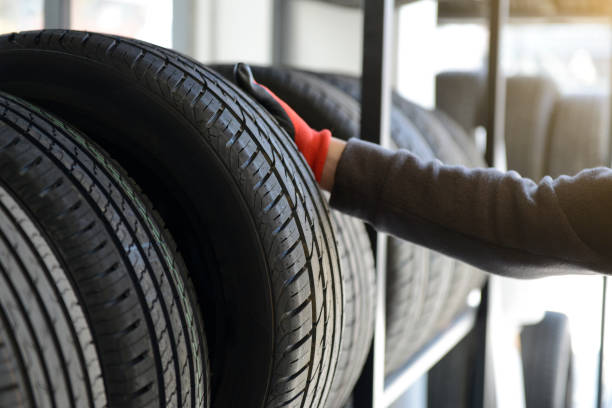Fire ignition is one of the most prevalent incidents that may happen at the construction site. Heavy equipment is more likely to catch these fire incidents due to several reasons. Therefore, fire safety is a must when working with heavy equipment at construction sites. However, mishaps can still occur despite the strict safety measures in place. These fires not only result in substantial financial losses but also pose serious safety issues. Therefore, it is essential to understand heavy construction equipment-specific fire investigation methodologies in order to prevent such events and ensure a safer working environment.
Why Fire Investigation is Important?
Fire incidents can happen at any place prone to having major causes and risks. The construction job site and the use of heavy equipment are one of the most prominent areas where these incidents are more likely to happen. It is a must to understand that fire investigation at an early stage may reduce the risk and give leverage to handle the situation in the early stages. Investigating fire risk is important because of the following reasons:
-
By enabling the adoption of preventative measures, it helps in diagnosing the root causes of fires and can help prevent subsequent incidents.
-
Reliable fire investigations provide crucial information for insurance claims, assuring fair damages reimbursement.
-
Knowing the cause of the fire could have legal repercussions, especially when it comes to negligence or defective heavy construction equipment.
-
Investigating fires also aids in maintaining the general safety of construction sites by defending both personnel and pricey equipment.
Initial Assessment
Making an assessment is the first thing to do following a fire involving significant construction equipment. The following things you need to consider during the initial evaluation.
-
Put employee safety first by evacuating the area and ensuring that everyone is far enough away from the fire.
-
Inform the necessary officials, such as the fire department and, if necessary, law enforcement.
-
Keep the scene as it is to preserve the integrity of the evidence. Keep the machinery from moving or starting if there isn’t an immediate threat.
Finding the Source of a Fire
Finding the fire’s origin is a crucial component of the inquiry. It may help the investigator to identify the major source of fire and find the solution to put it off as well. Some of the methods to figure out the causes are:
-
The pattern of fire occurrence and neighbouring structures can explain the detailed information about the initiation of the fire in equipment.
-
Several random interviews with the people around the site can also provide evidence of the fire’s cause.
-
The area and severity of equipment damage may also help identify the cause of the fire.
Analyzing the Root Causes
After finding the source, you need to evaluate these factors after you have determined what started the fire. After determining the fire’s origin, you need to examine the cause of the fire. Large construction equipment fires are easy to start due to a variety of factors, including:
-
Faulty components or broken machinery can spark or overheat, which can start a fire.
-
Faulty wiring, short circuits, or worn-out electrical parts are commonly to blame for electrical fires.
-
Fuel or oil leaks may catch fire and spread quickly if they have to face high temperatures or sparks.
-
Carelessness in the use or maintenance of the equipment may play a role.
Tools for Fire Investigation
During the investigation process, fire investigators commonly employ a number of tools and equipment, such as:
-
Thermal cameras can detect hotspots and heat sources, which can be utilized to identify potential ignition sources.
-
Gas detectors are capable of finding combustible gases that may have started the fire.
-
Forensic analysis can yield important information when items taken from the scene, including burned materials, are tested in a lab.
Fire Prevention Techniques
Once the investigation process comes to an end, you need to take preventive measures. Sometimes, early preventive measures could save you from a big loss. Several preventive measures should be into practice to lessen the danger of fires in heavy equipment such as:
-
Inspections and scheduled maintenance can spot possible problems and fix them before they become fire hazards.
-
Adequate equipment operator training assures safe operation and lowers the risk of accidents.
-
By installing fire suppression systems on machinery, fires can be quickly put out and their spread stopped.
-
Also, set smoke sensor alarm points at different locations even in the machine to beep if they catch smoke or fire.
Collaboration with Other Departments in Fire Investigation
Collaboration between numerous parties, including firefighters, insurance companies, manufacturers of equipment, and construction firms, is frequently necessary for investigating fires involving heavy construction equipment. For a thorough inquiry, various parties must effectively communicate and coordinate.
Fire Department
The main responsibility of the fire department is to cover and put out the fire. They are important in keeping the scene intact for the purpose of the inquiry. Whereas, firefighters are trained to recognize potential ignition sources and can give investigators crucial information.
Insurance Firms
Since the cause of the fire has a direct bearing on insurance claims, insurance firms have a stake in knowing what caused it. To obtain information and determine liability, they might work closely with the individuals conducting the primary investigation or hire their own detectives.
Equipment Manufacturers
In situations when equipment failure is likely to happen, manufacturers can offer insightful information. They could be able to provide details on previous recalls, design problems, or maintenance advice that could be helpful to the investigation.
Construction Companies
The operation and maintenance of the equipment are the responsibility of the construction firm using it. They must assist investigators fully and turn over any relevant information, such as maintenance logs and operator training logs.
Footnote
Heavy construction equipment fire investigation techniques are essential for ensuring safety, avoiding mishaps, and safeguarding expensive assets. Construction organizations can actively lower the danger of such occurrences by taking preventative measures by studying the causes and sources of fires first-hand. A thorough fire safety plan must include regular maintenance, operator training, and the deployment of fire suppression devices. Furthermore, companies could make job sites secure for every individual involved by conducting thorough investigations and taking preventative actions.

















